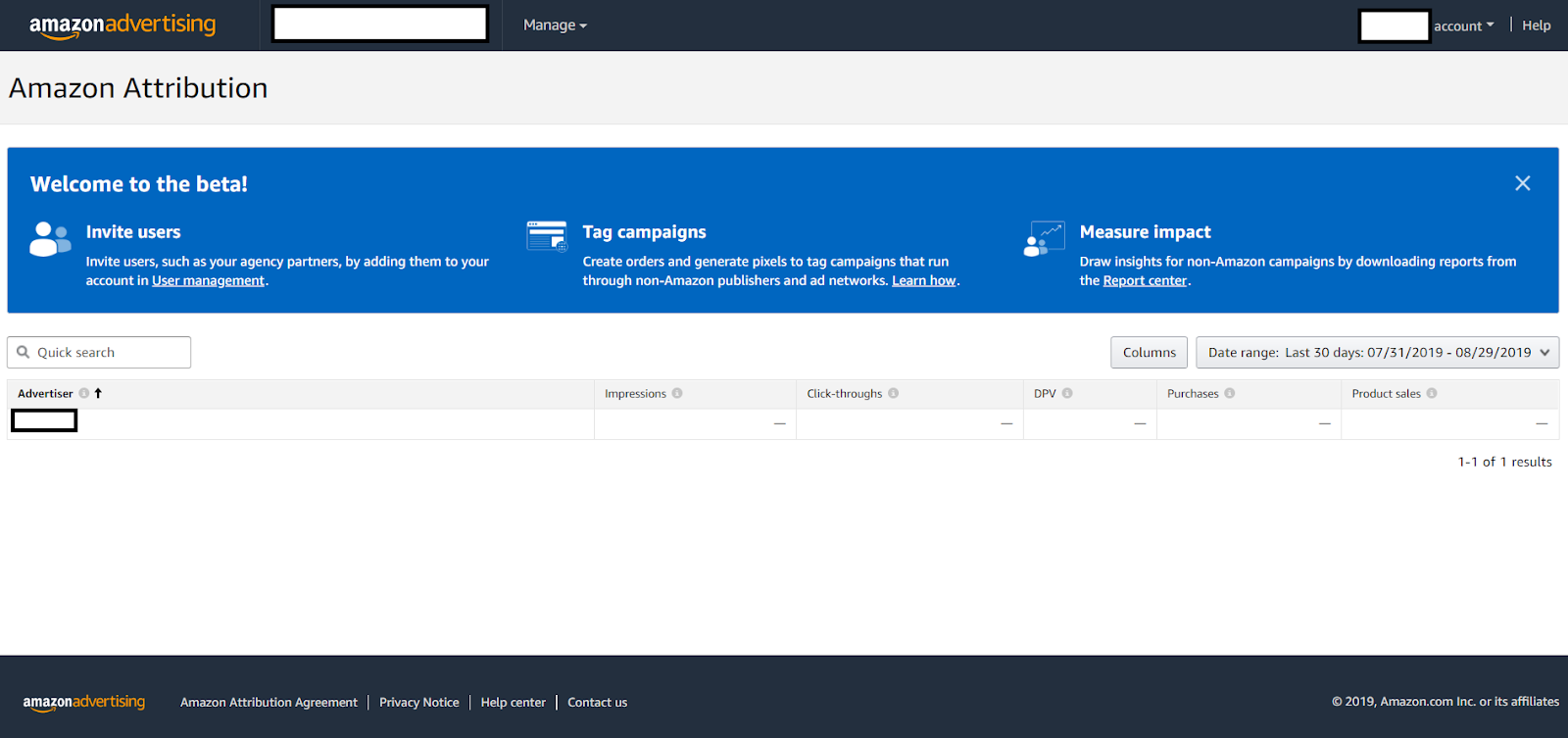It’s no secret that Amazon encourages us to drive traffic to product listing pages, but to most experienced marketers, there is one giant issue with that suggestion: accurate attributable data.
On the other hand, leveraging social media, influencers, and even traditional search marketing platforms like Google and Bing has become a growing piece of the strategy for most brands to bring traffic to their Amazon listings.
But how do we do utilize the traffic from those platforms optimally without the ability to track on Amazon performance attribution metrics? This is when the Amazon Attribution program comes into play.
In late 2017, Amazon quietly launched the invite-only beta program for Amazon Attribution. Although the program is still in beta, now that vendors can apply it appears that the missing puzzle piece that brands and marketing strategists have been begging for has finally arrived.
The Amazon Attribution program beta is a web-based, self-service, advertising measurement solution that provides advertisers the ability to analyze performance across different media platforms off Amazon. The Amazon Attribution program’s conversion metrics allow advertisers to get a view into how different marketing tactics contribute to shopping activity on Amazon.
THE CASE FOR THE AMAZON ATTRIBUTION PROGRAM
For sellers and vendors, the only available tracking option for monitoring sales and performance data is through their Amazon storefront. Although very useful, it has significant limitations such as only being able to track sales at the aggregate level from the landing page, not by the landing page of the single ASINs themselves. Other options that come close include third party options like Bitly that can click track. And even though there are ways to take this data and apply a reasonable theory of outcome, it’s still not attributable data at the end of the day, in other words, the data you can’t take to the board.

the scoop on the amazon attribution beta
The Amazon Attribution program provides users the opportunity to track the impact on Amazon of external marketing efforts such as display, search, video, and email marketing initiatives. Metrics vary by platform, but common ones include Amazon page views, purchase rate, and sales.
According to the large nutritional company Premier Nutrition, the program allowed them to quantify and scale external marketing initiatives, which led to significant year-over-year growth in Amazon sales.
“Premier Nutrition observes a 96% quarter-over-quarter growth in sales and a 322% year-over-year growth in sales on Amazon for its Premier Protein products after implementing Amazon Attribution.” (Amazon Advertising Case Study - Premier Nutrition)
With impressive results and a promising future, it’s important we cover the known basics of the program.
WHO: Currently, only vendors can apply to the beta program. For agencies managing vendors, those agencies must be invited by the brand; there is currently no dedicated agency portal for the program.
WHERE: The Amazon Attribution program is currently available as as extension within the Demand-Side Platform (DSP) marketing interface.

Amazon Attribution's beta interface
HOW: Using the program, brands can create unique tracking tags or click-through links that can then be used as a destination link/tag in search, display, video, and other applicable marketing platforms.
OTHER DETAILS:
- There are no additional fees or minimum spend requirement from brands.
- Tags/links created cannot be used with campaigns on Amazon’s site.
- Cross device tracking (computers, phones, tablets) data is available.
- A 14-day last touch attribution look back window is used, based on last impression within 14-days, unless a click occurs as clicks always trump impressions. If you’re new to Amazon’s display attribution model you can learn more here. (NOTE: You must be logged in to the DSP interface to access this page.)
- Tags may be utilized on direct sites as well.
HOW TO LEVERAGE THE AMAZON ATTRIBUTION PROGRAM
So, what happens when there is attributable data for external sources bringing traffic to Amazon? It’s a big deal, and here are a few reasons why:
- Scaling Impactful Strategies: With the ability to track traffic and conversions from different sources, brands can accurately measure the impact of their omni-channel efforts. For example, currently if a brand utilizes Google Adwords without the Amazon Attribution link, the data stops as soon as the customer gets to Amazon. With the Attribution program and the additional data, brands can tack and scale the customer journey from an off-Amazon platform to Amazon. Once the optimal conversion path is identified, marketing strategies can be optimized and created that cater to that ideal customer journey.
- Better Budget Utilization and Increase ROI: With accurate conversion, data and targets that yield the most effective and efficient results can be further optimized to acquire orders at an optimal rate and cost—leading to an increase in ROI. Currently, without the Amazon Attribution program, brands are unable to really identify the true impact of their efforts, which means their is very little opportunity to scale the efforts. Often times, without the accurate data, brands are unable to continue to offer the budgets needed to support campaigns that link to Amazon, which makes our options to generate volume seem even more limited.
- Increase Market Share: Being able to effectively bring and track interested traffic to product listings fills market gaps and shortens the path for customers to discover your products on Amazon. Additionally, the converting volume will have a positive impact on organic rankings. This increases product visibility on Amazon and even impacts existing Amazon PPC conversion rates and overall ad sales volume.

what to expect next
Amazon is in an encouraging race to be the largest ad platform in the very near future, and they’re keenly aware of what it will take to get them there.
With the release of the Amazon Attribution program, they have opened up the opportunity for brands to get the insight needed for them to scale their holistic marketing strategies and have afforded another lever that brands can pull to increase sales on Amazon. They have also created an ad feature that other ad platforms are unable to offer to brands.
If you’re like me, then this is something that has been at the top of your “if only” list for the last five years!
Although, it may seem like a bit of a one-sided conversation at times, Amazon is listening to us, which is why I anticipate the program being opened up to both sellers and vendors in the future, similar to how DSP (formerly AMG) was only a vendor platform but now can be used by FBA sellers as well.
If you’re just as excited about the Amazon Attribution program, and are interested in taking your brand’s marketing strategy to the next level, our team of Amazon certified marketing strategists would love to help!
To learn more, please feel free to Contact us.
.png)

